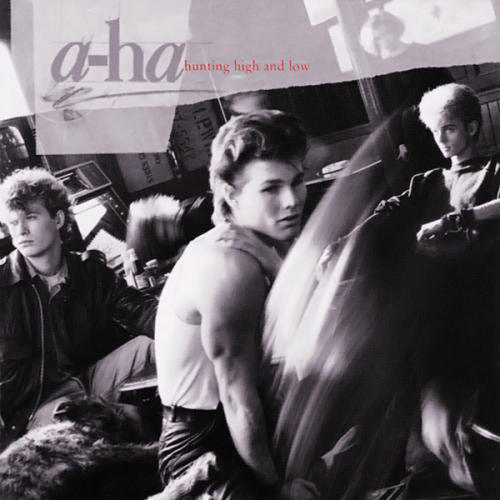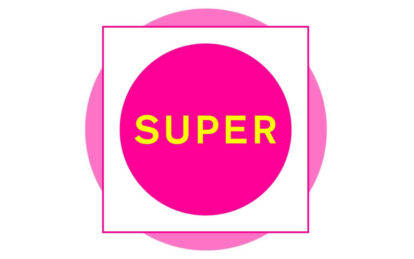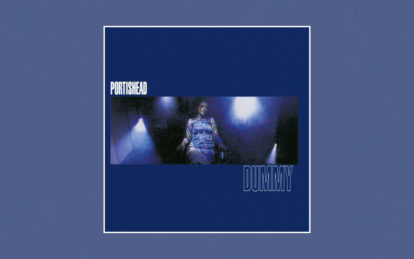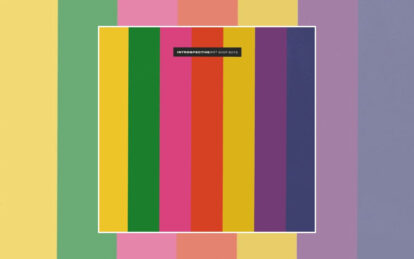
a-ha: Hunting High And Low cover
a-ha: Hunting High And Low is one of the finest synth-pop albums of all time, and one of the most successful debuts ever.
Here Classic Pop speaks to the band’s principle songwriter Paul Waaktaar-Savoy about the album’s not-so-easy inception and how the arrogance of youth led to its recording… By Andy Jones
Synth-pop seems to avoid swinging too far in and out of fashion, unlike so many genres that have risen and fallen before and since its inception in the late 70s.
This constant relevance could be down to the instrument’s inherently futuristic sound and, indeed, the part it played in the futurist movement… or perhaps it’s thanks to the slick productions enjoyed by so many great synth-pop recordings. Think Dare, or Lexicon Of Love – there‘s a freshness to those records that is seemingly indelible.
The same could be said, we’d argue, for a-ha: Hunting High And Low.
It’s an album that has stood up remarkably well in all the years since its recording three and a half decades ago, and the proof that the present is no different lies in the fact that the band have been celebrating that milestone by carrying the album in concert across the world, to huge audiences and in territories they would never have dreamed of touring at the time of its release.
Although Hunting High And Low contains some of the band’s landmark singles – Take On Me, The Sun Always Shines On TV, the title track itself – it also contains some of the band’s finest album tracks.
It’s a work which is solid from start to finish, and playing it from start to finish is exactly what a-ha have been doing on the tour, opening with Take On Me – a song they used to close shows with.
It’s a move that sets the bar challengingly high from the off. “You start with a party, and then it’s full-on from then on!” grins a-ha’s guitarist and main songwriter Paul Waaktaar-Savoy.
a-ha: Hunting High And Low – Take On Me
Hunting High And Low was, of course, the band’s first album and it is easily their most successful.
The band formed only a couple of years before its release, and the world domination that followed had always been part of the a-ha masterplan, a blueprint drawn up by the three members in their home city of Oslo that involved them bravely moving to London without any employment to fall back upon, getting a record deal and then somehow becoming one of the biggest bands in the world.
And they did it. Perhaps there’s something to be said for the arrogance of youth…
“We were not exactly lacking in confidence, that’s the best way to answer that,” Paul reflects, looking back at the fateful move from Oslo to London.
Perhaps part of a-ha’s lack of humility stemmed from the fact that each of the members had all already played in various bands, had recorded some pretty good demos and had been involved with music for much of their lives.
“I guess I started music at around the age of nine, playing drums,” Paul says of his own upbringing. “I went through a lot, trying this and that: guitar, then bass, drums, keyboards… so it was a process to try and find the right instrument.”
Paul met a-ha guitarist and keyboard player Magne Furuholmen before they both hooked up with lead singer Morten Harket, and the two initially played together in a band called Bridges.
“We lived in the same street,” Paul says of their first encounter. “I was playing together with a friend across the street and he had a balcony and we’d open the door and drag the amplifier close to the window and have a sort of little impromptu concert.
a-ha: Hunting High And Low – Love Is Reason
“That was the first time Magne heard us play. We’d heard rumours that he had an amp that we didn’t have – his grandad was a professional musician, like a squeezebox guy, and he had this amp with a tremolo on it, which we thought was the coolest thing ever!”
The two teenagers quickly realised they shared a passion for the same kinds of music.
“The more we started playing together the more we found common things – Hendrix, The Doors, lots of 60s stuff, you know, the punk stuff that was happening around that time. Our interests definitely gelled the more time we spent together.”
a-ha: Hunting High And Low – A bridge to success
Paul and Magne’s time in the band Bridges was notable as it was here that they first came up with an early version of Take On Me (later dubbed ‘The Juicy Fruit Song’ by Harket), with Mags contributing the synth line and Paul the lyrics.
“The first lyric I found was in a book that I had at school, so that was around 1979 or something like that, so it was way before a-ha,” Paul confirms. “The melody of the verse was how we started that song and I threw together a throwaway chorus on top of that. I was lumbered with that chorus for years…”
Bridges also played another key part in a-ha’s history, as the band eventually led Paul and Mags to meet their destiny.
“When we were 15, when Magne and me were almost neighbours,” Paul recalls, “he and his family left to move to the opposite side of town, towards the outside of Oslo. He ended up going to school in an area where Morten grew up. Bridges did a show at that school – and that was the first time Morten heard about us.”
a-ha: Hunting High And Low – The Sun Always Shines On TV
The three struck up a friendship and started playing music together and very soon had that world domination mapped out. “Well, we sort of had a masterplan pretty early, way before high school, that we were going to go to London and try and get a deal, so that was in place for years, very early,’ nods Paul.
“These days Norway is bubbling with so many bands, but back then there was absolutely nothing… like just one radio station that would play a couple of hours of rock music a week. And every artist that sold music in Norway just did Norwegian versions of foreign hits. We instinctively felt that we could only spend so much effort there, and that if we stayed we would not be playing to our real strengths.”
So the trio moved to London, then the acknowledged centre of the music universe – a strategy which would seem risky to most people, especially with no Plan B in place, but the band were undaunted. Paul: “It sounded like a fairytale, like ‘How much fun is this going to be?’
“We were never worried about anything, and when you’re that age you can go for quite a long time without that much money or things to eat! I never remember thinking about it or worrying about it. I think at that age you don’t… you just do it.”
In fact, about the only things the band took with them were confidence and some very rough and ready demo recordings, but they also had a key idea: to use synthesizers as a large part of their sound.
“That came from being in Bridges,” Paul muses. “We had recorded two albums; one was sort of all-played, but then we thought: ‘Well, how are we going to make our mark?’
“The synthesizer was just starting to intrigue us – it was very much at the beginning of the instrument. I bought the very first guitar synth and played my other guitar straight into that, and we had this plan that we all had to change over to synths, so we bought synthesized drums too.
“Our drummer hated them – they were quite crude. He was a very skilled drummer and he hated that non-touch sensitive element, it was dumbed down a lot. But that was the plan, everything needed to be synths.”
When Bridges broke up Paul, Mags and Morten decided to keep this synth-orientated strategy, and the deal was sealed when the first studio they hired just happened to be stocked with suitable technology.
“When we moved to England we didn’t have any instruments,” says Paul, “and we just hired a studio, and it had a Prophet-5 synth and a drum machine. For the next two to three years that was what we would do. We relied either on somebody leaving a synth in the studio overnight or otherwise just finding something we could sneak in and use.”
Meanwhile the songs were coming together for the album, some of which had been begun in the days of Bridges. “There were bits and pieces here and there,” considers Paul, “like the verse from Here I Stand And Face The Rain, which is also from the same kind of era, but then you came up with a chorus that really kind of changed the whole thing.”
Meanwhile that ‘Juicy Fruit’ song was still hanging around, waiting for a better chorus. “There is one version that Bridges did, a kind of punk version,” explains Paul. “Then the first time we worked together as a-ha we did a version on a four-track which we called Lesson One.”
This version – still available for the curious on YouTube – had a chorus which could be best described as a prototype.
“Sometimes when something comes really quickly you think, that’s it, don’t touch it,” Paul muses, “but the closer we got to releasing the first album the more unhappy I became with that chorus, so that’s when the second part of the writing of the song started – trying to come up with a chorus.
Read more: a-ha – Album By Album
Read more: Top 40 80s debut albums
“I always thought it was a catchy song, but it was also a little bit of a sugar rush, after some time you got sick of it… so I was really looking for a chorus that gave you an emotional pay-off, so you had more of an arc as a song that looped around itself.”
a-ha: Hunting High And Low – Hunting for help
With many full songs in place and the odd classic verse awaiting a chorus, a-ha still found themselves in need of a permanent studio and – even more difficult to find at the time – a producer to take the project forwards.
“We weren’t lacking in confidence, but at the same time we realised that it could easily go sideways. Just getting a producer was super-hard. It was the era when the producer was king, you know, and they didn’t want to commit, they wanted to hedge their bets until they knew there was nothing better coming along.
a-ha: Hunting High And Low – Hunting High And Low
“We probably spent six or seven months just waiting to get a producer. At that point we didn’t care who we went in with, we just wanted to start. We weren’t even quite sure what a producer actually did, having done everything ourselves before. With Bridges, we called the guy who drove the car the producer!”
Eventually ex-New Musik frontman and Captain Sensible producer Tony Mansfield was drafted in, and he oversaw the recordings of many of the song’s on Hunting High And Low including a now ‘complete with new chorus’ version of Take On Me.
“We had block-booked Eel Pie Studios,” Paul recalls. “It belonged to Pete Townshend and it was still being constructed at the time, so we got a really good deal, but it didn’t really have a proper live room we could work in… just a recording room and a little booth.
“I remember that since it was a block booking we worked longer and longer into the night and would sleep longer and longer into the day. It was exhaustion at all levels, a new experience! But having spent all our teenage years playing in traditional bands, rehearsing four or five times a week, we were used to working fast.”
But their old method – play together, lay it down on tape as swiftly as possible – had to change.
“We would knock up these demos in one day but suddenly now everything had to go through a Fairlight [sampler]. Now it was all about recording one instrument at a time and piecing it together, so it was a new way of doing stuff, a different way of working. And when our time ran out, we only had six or seven songs. So that was a major setback and Warners were like, ‘Are we going to spend even more money on this?’”
Luckily Warners stood by the band, even through the initial chart failure of the Mansfield-produced version of Take On Me. With a general agreement that it wasn’t the material that was at fault, the song – and some of the other tracks – were re-recorded with a new producer. “We fixed up quite a few,” Paul says. “The whole album was re-imagined a bit, in a way. We mixed it and did a few tweaks.
a-ha: Hunting High And Low – The Blue Sky
“We liked a lot of the stuff he [Mansfield] did, but he did have this one thing where we ‘had’ to use the Fairlight… which sort of took the ball out of our hands and put it into his hands. We had a lot of demos that we were quite happy with, but with a Fairlight sometimes you’d only have eight tracks so you couldn’t necessarily do what we had done on the demos. On the tracks we re-recorded with Alan Tarney we were always going back to the demos and using them as a point of reference. So when it worked with Tony, it was really cool… but when it didn’t, we often felt like the demo had been better, and we missed that vibe.”
a-ha: Hunting High And Low – Taking on the world
The band’s confidence with Alan Tarney would eventually be justified, but only after another chart failure, this time of his new version of Take On Me. But finally, thanks to that now classic animated video and its constant rotation on MTV, the song hit the top of the charts around the world at the third time of asking, eventually notching up sales of an incredible nine million copies.
Even more amazing are the song’s current video stats: it’s now been played over a billion times on YouTube and is still clicked upon around half million times per day. What were we saying at the beginning about some synth-pop being timeless?
After that breakthrough, another single, The Sun Always Shines On T.V., hit UK No.1 (actually outdoing Take On Me, which only got to No.2) on its way to selling five million copies. Three more singles – Love Is Reason, the title track and Train Of Thought – helped Hunting High And Low to reach equally dizzy heights, and the album has now notched up sales in excess of ten million.
Read our 2017 interview with a-ha here
Read our interview with regular a-ha video director Steve Barron
“There are definitely some things I am happier with than others,” Waaktaar says, looking back at the elements that make up the album today. “But when you come back to it, having not listened to it for a long time, it’s not so straightforward. It does a lot of sidesteps here and there, and I think a lot of the songs have survived.
“Sometimes with an 80s type of production you get locked into a certain kind of thing, but we did a lot of oddball chord changes, plus some different lyrics and arrangements. It wasn’t too heavy-handed, for the 80s, which is great.”
When asked about how it feels to have penned some of the most iconic songs of a generation, Paul is modest.
“Well, putting it that way, it feels pretty good,” he considers. “It’s often a very solitary type of work, so any kind of comment you get where you feel you’ve connected with people, that’s the best bit that you can expect. It can be easier to accept if it’s just a comment from one person rather than a kind of blanket statement, and that feels very good… like you made an impact, you did something or just played a part in somebody’s day. It’s a good feeling.”
a-ha: Hunting High And Low – I Dream Myself Alive
Go to a-ha’s official website here
Classic Pop may earn commission from the links on this page, but we only feature products we think you will enjoy.






